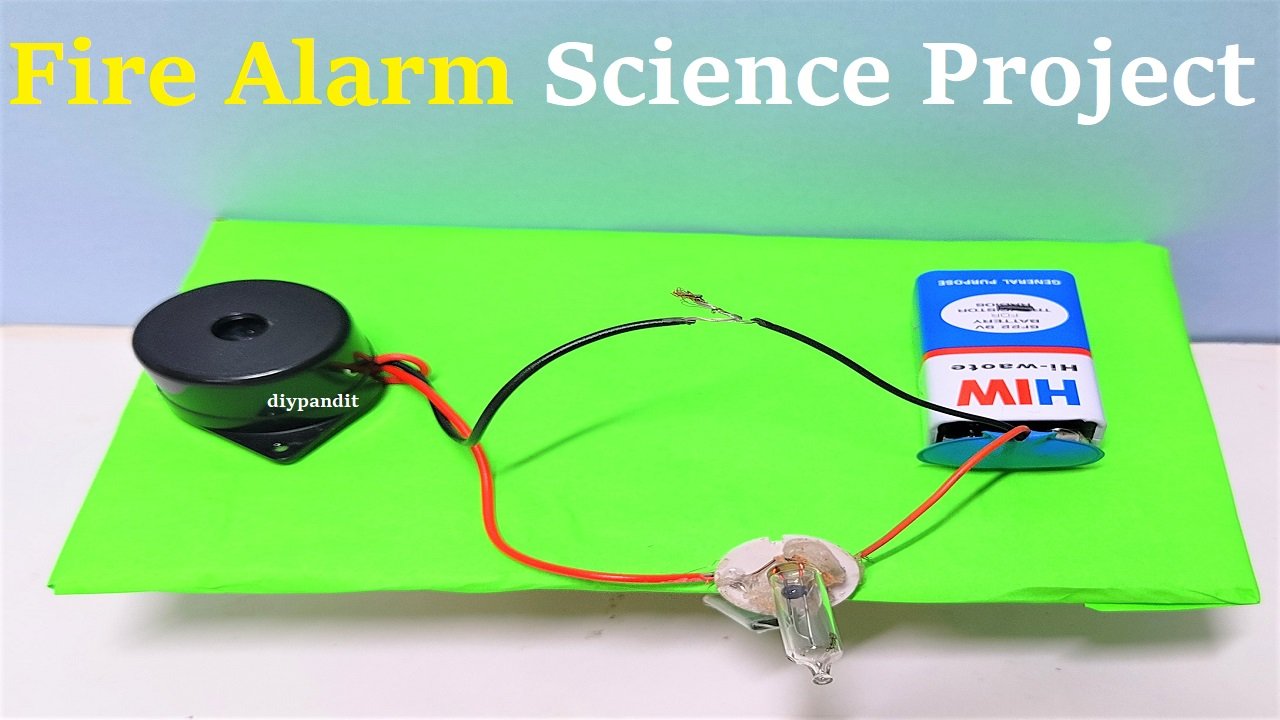A fire alarm is a crucial safety device designed to detect and warn people about the presence of fire in a building.

Its primary purpose is to provide an early warning, allowing occupants to evacuate safely and take appropriate actions to control the fire or seek help.
When a fire is detected, the fire alarm system activates all the necessary alarms simultaneously, alerting the occupants to evacuate immediately and take predetermined escape routes.
- Heat Detection: The tubelight starter acts as a heat-sensitive switch. Its bimetallic strip bends and closes the circuit when exposed to high temperatures.
- Circuit Completion: When the starter is heated and closes the circuit, current flows from the battery to the buzzer.
- Alarm Activation: The buzzer sounds off, providing an audible alert of a fire.
This simple fire alarm leverages the heat sensitivity of the tubelight starter to detect high temperatures and activate a buzzer, demonstrating basic principles of thermal detection and circuit completion for emergency alerts.
Step by step video instructions on making fire alarm using tube light starter
#firealarm #scienceproject #diypandit #scienceexhibition #sciencefair #workingmodel #workingproject #scienceworkingmodel
In normal conditions, the circuit remains open because the bimetallic strip inside the tubelight starter is not heated and remains separated.
When there is a fire, the heat causes the bimetallic strip inside the tubelight starter to bend and touch, closing the circuit.
Once the circuit is closed, current flows from the battery through the buzzer, activating it.
The buzzer emits a loud sound, serving as an alarm to alert of the fire.

